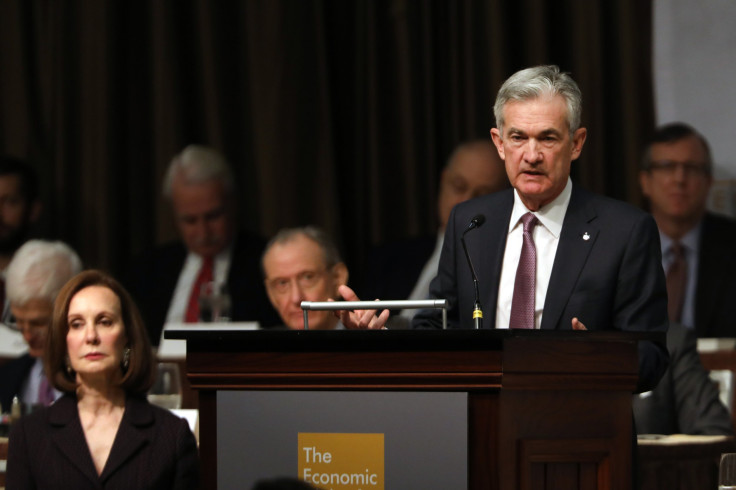Fed To Turn Dovish On Rate Hikes In 2019: IBT Poll

The U.S. Federal Reserve is expected reduce the number of rate increases next year, and raise the current federal funds rate by 25 basis points to a range of 2.25-2.5 percent at its upcoming meeting Wednesday.
Twenty-five of the 26 analysts polled by International Business Times expected the central bank to raise rates on Dec. 19. One analyst did not provide forecasts on the December rate hike.
15 analysts forecast two interest rate hikes in 2019, against the Federal Open Market Committee’s (FOMC) median expectation of three rate raises given in September.
Six analysts believe that the central bank may deliver three rate rises next year; four expect only one rate hike. One analyst didn’t provide forecasts for 2019.
If the Fed does raise interest rates in its December meeting, it will be the fourth interest rate hike this year, compared to the three delivered in 2017. At the end of 2017, the rate was 1.25-1.5 percent. In September the Fed raised the rate to 2.0-2.25 percent.
The Fed started its tightening cycle in December, 2015, when the rate was pegged at 0.0-0.25 percent.
ING pointed out in a note that even market participants have grown skeptical about the course of monetary policy in 2019. ING said Fed funds futures contracts suggest the market is no longer fully pricing even one hike in 2019.
Bank of America expects the Federal Reserve to align its messaging in line with its objective of assuring a soft landing for the economy. The advisory firm said in a note: “We expect the messaging from the FOMC at the December meeting to continue to be dovish as they pull back on forward guidance for the path of policy and shift to a more data dependent central bank. The Fed's outlook should still call for above trend growth and steady inflation but the shift in tone and messaging is consistent with a Committee that wants a soft landing for the economy.”
ING pointed to headwinds the economy will face next year that may force the central bank to moderate its stance on interest rate hikes. “The lagged effects of higher interest rates and the stronger dollar are increasingly being felt while the support from this year’s fiscal stimulus will fade. 30-year fixed-term mortgage rates are now above 5 percent and home sales are slowing, which has negative implications for construction spending and associated retail activity next year (furniture and furnishings etc). Investment spending growth also appears to be softening despite the large corporation tax cut.”
ING also said President Donald Trump’s criticism of the monetary policy was leading to the softer tone from the central bankers. In an interview with Reuters, President Trump said that he needed flexibility of lower interest rates to support the broader U.S. economy as he fights a growing trade battle against China.
In a speech at the New York Economics Club on Nov. 28, Fed Chair Jerome Powell reignited speculations on the neutral fed funds rate and natural rate of employment, saying the current interest rates are “just below” neutral.
Merrion Capital’s chief economist Alan McQuaid, one of the four analysts who think the Fed will raise rates only once next year (in March), said, “The global economic/geopolitical background is turning more negative as the days go by and the Fed is aware of this. We will see an increase next week but the risks for 2019 are tilted to the downside, with the possibility that the US central bank could sit on the fence for the whole year.”
Briefing.com’s chief market analyst Patrick O’Hare noted that the ongoing trade negotiations will have an impact on the course of the Federal Reserve’s monetary policy. “Rate-hike expectations will be subject to change, pending the outcome of U.S.-China trade negotiations,” he said.
© Copyright IBTimes 2024. All rights reserved.




















